A table made of epoxy resin looks unusual. By using this material, it is possible to create unique designs that look good in any interior. Using resin, you can turn an ordinary wooden product into a real piece of art.
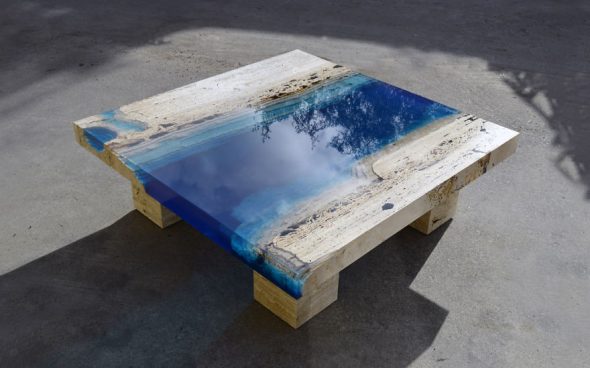
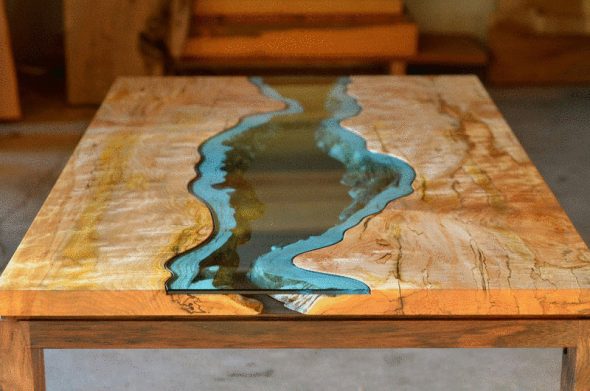
Content
Material Features
Epoxy resins are synthetic compounds of oligomers. This material is not used in its "pure" form. Its properties are revealed only after contact with a hardener.
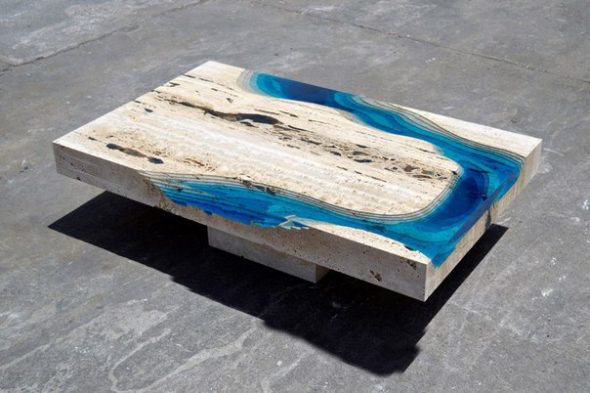
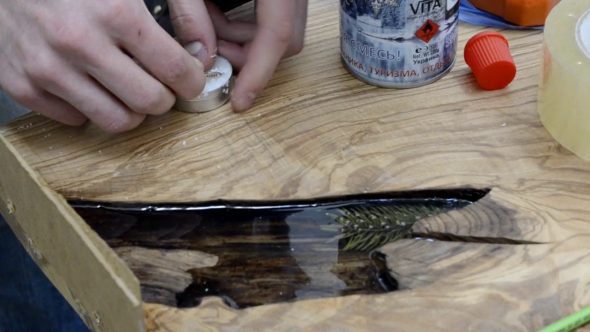
By changing the combinations of the main components, resins with different characteristics can be made.
- solid;
- liquid;
- high strength;
- rubber-like and others.
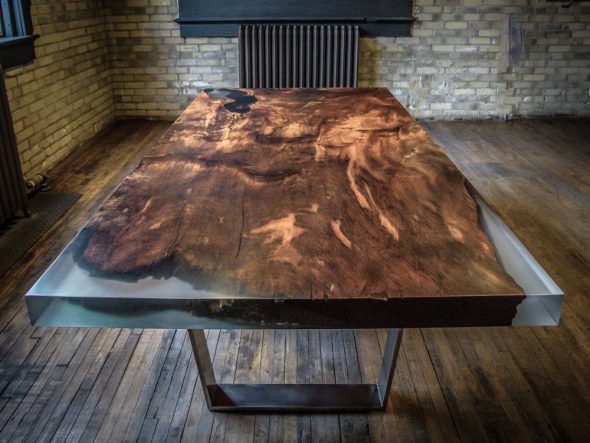
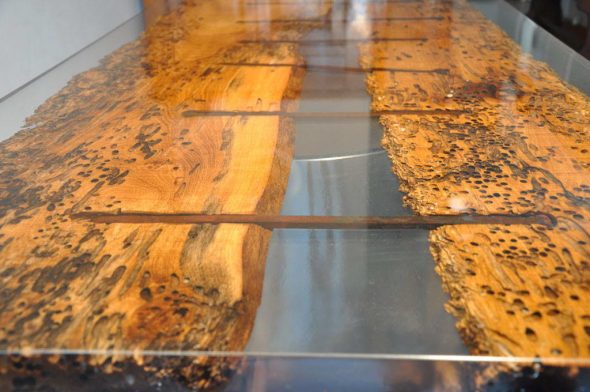
The scope of application of epoxy resin depends on its modification. The list and features of the latter are given in the table.
| Modification type | Characteristics |
| Chemical | To obtain it, various chemicals are added to the resins and come into contact with them (polyester alcohols and others). These components change the characteristics of the main ingredient. |
| Physical | The modification is obtained by adding a substance to the resins that does not interact with them. |
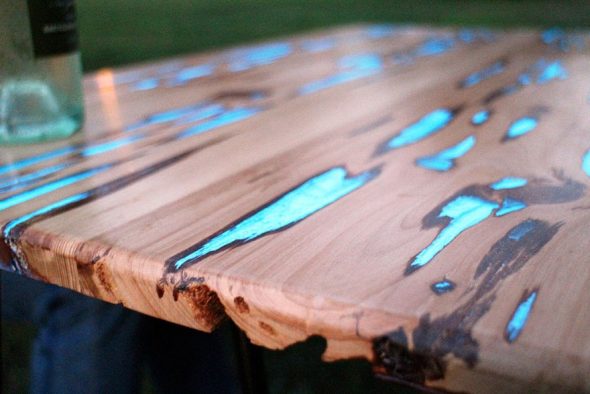
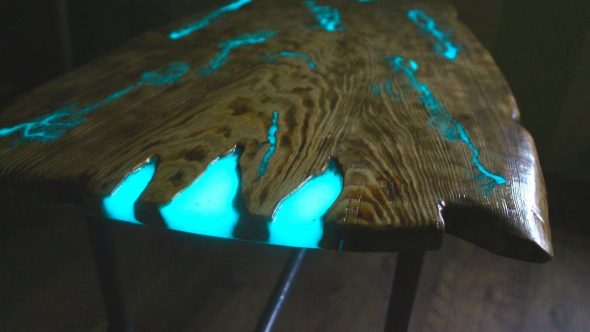
An epoxy resin table is made by applying a synthetic material to a wooden base. The result is a product that is highly resistant to chemicals.
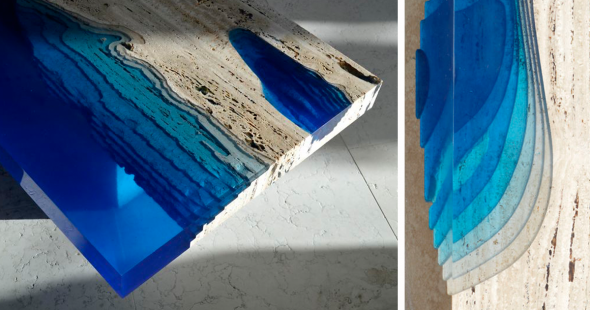
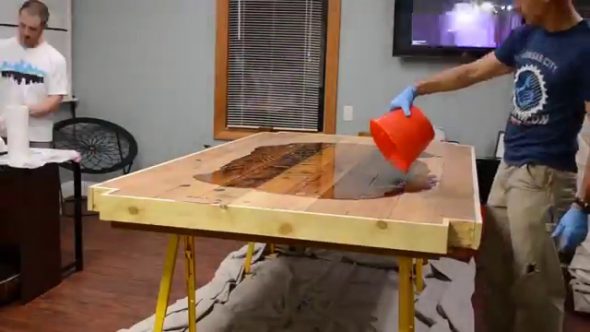
To make a table from epoxy resin, in addition to preparing the wooden base, it is necessary to mix the synthetic material and the hardener. The composition characteristics depend on the ratio of both components. Excessive or insufficient content of the hardener helps to reduce:
- product strength;
- resistance to chemicals and water.
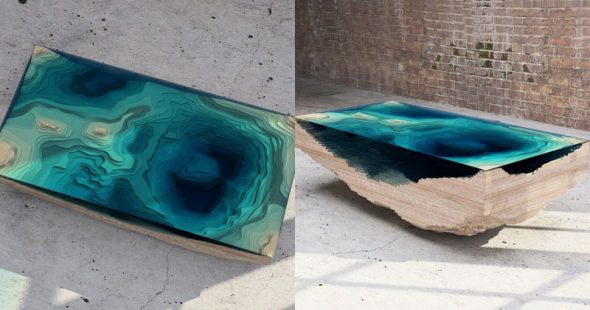
In this case, the excess hardener comes out of the resin. In most cases, in the process of manufacturing various products using this material, the ratio of the original components is 1:1 or 1:2.
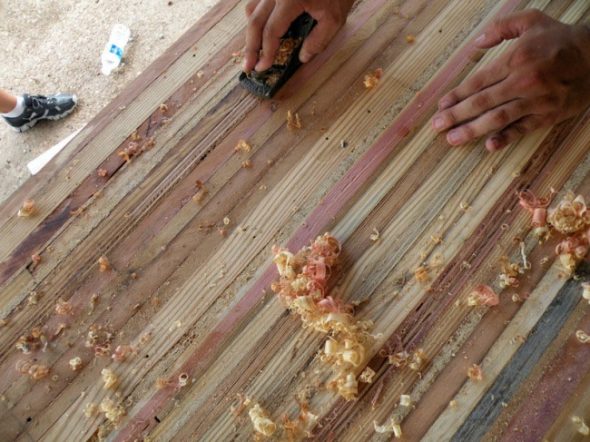
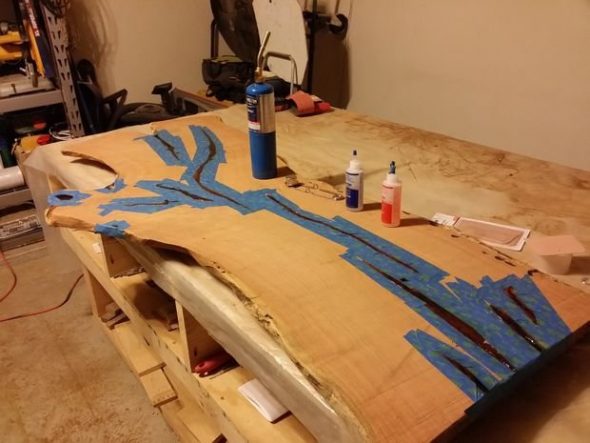
Types of products
Tables made of epoxy resin differ from each other in appearance and characteristics of the synthetic material. The latter can be cold or hot cured. For the manufacture of tables from epoxy resin at home, the first type of substance is mainly used.
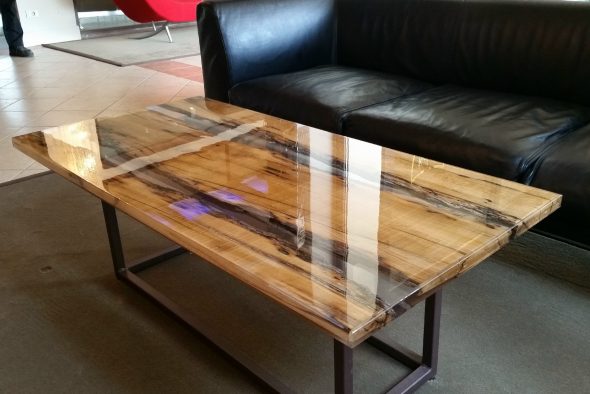
Advantages and disadvantages
Epoxy resin tables have the following advantages over standard wooden structures:
- have a unique appearance;
- waterproof;
- are not subject to abrasive influences;
- unlimited possibilities for design solutions.
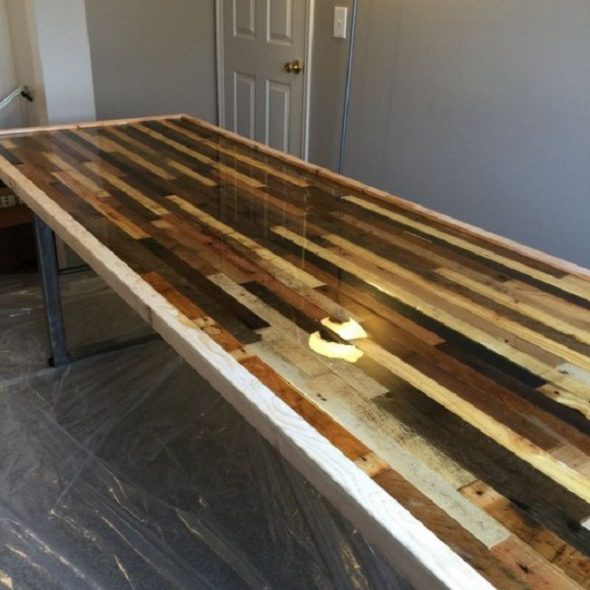
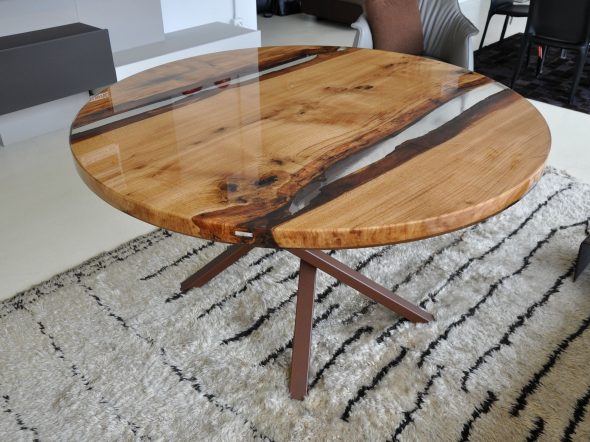
During the hardening process, the synthetic composition practically does not shrink. Tables made of epoxy resin can be made using additional materials:
- phosphorescent and other paint;
- rubber;
- wine bottle corks and so on.
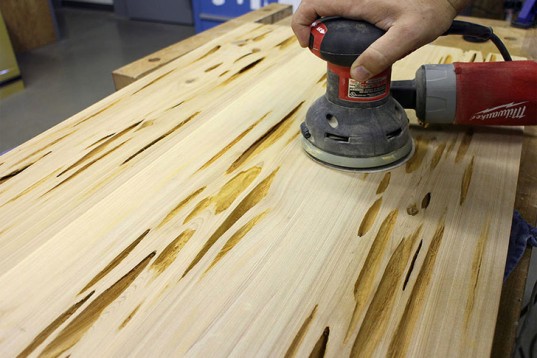
Among the disadvantages of epoxy resin tables, their higher cost should be highlighted. Depending on the type of construction, size and design, the price of covering one product takes several dozen liters of synthetic material.
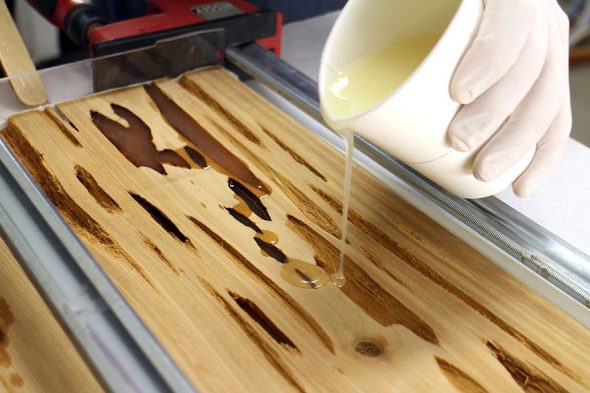
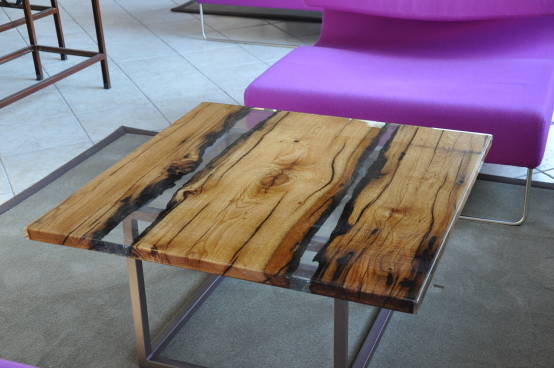
When choosing a table made of epoxy resin, you should pay attention to the presence of bubbles. They appear due to non-compliance with the technology of manufacturing the product and negatively affect its characteristics.
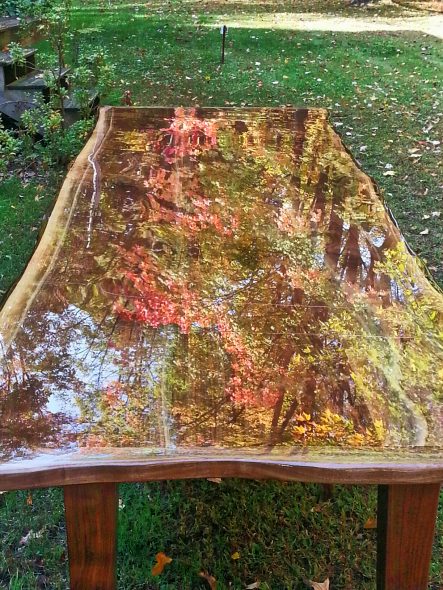
In the process of creating the structure, it is important to prepare the wooden surface by removing dirt from it. After that, the material should be primed, as the resin is well absorbed into its pores. In the future, the surface of the tabletop will be covered with air bubbles.
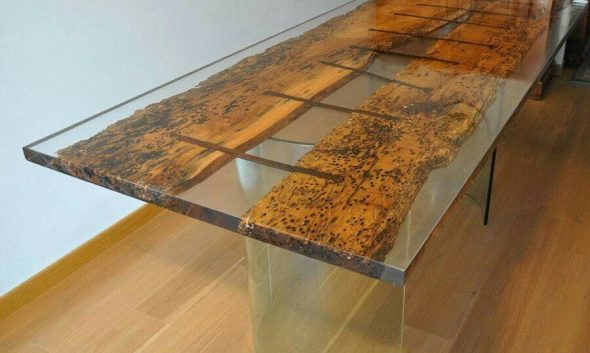
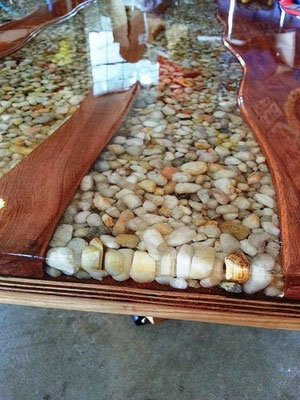
At the end of the preparatory stage, the epoxy composition (resin and hardener) is mixed, to which paints and other components are added if desired. The resulting substance is applied to the wooden surface. It takes about 15 minutes for complete hardening. To remove any air bubbles that appear, the surface should be heated with a building hair dryer.
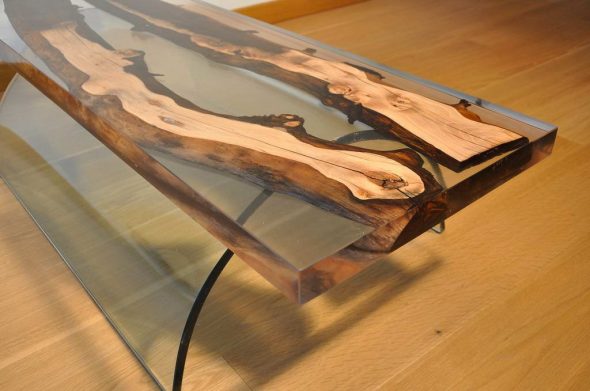
Finally, the tabletop is sanded and polished. It takes about 7 days to make the entire structure, during which time the material gains strength. After that, the product can be used for its intended purpose.
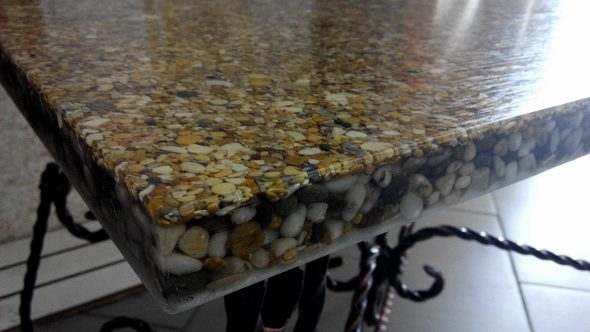
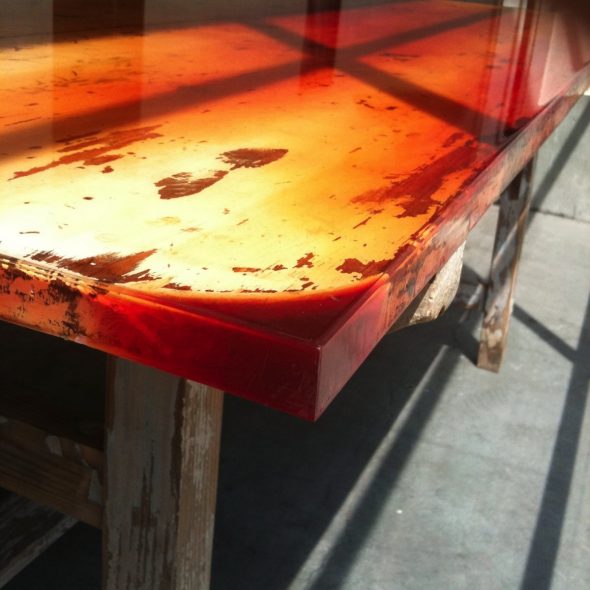

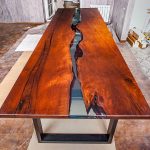
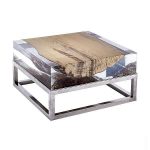
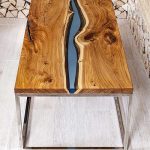

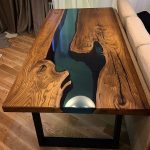
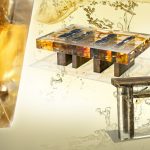
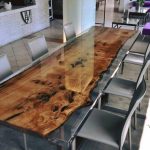
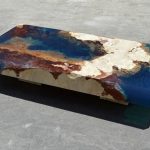
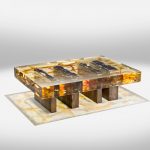
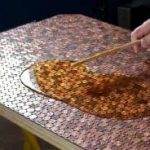
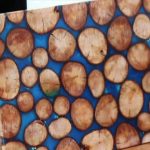
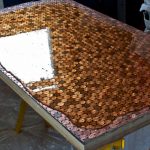
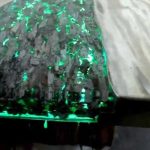
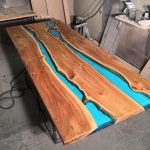
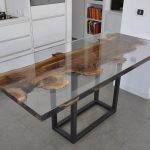
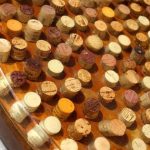
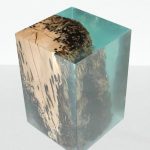
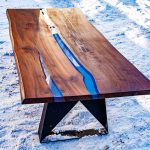
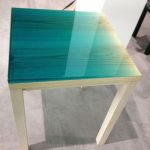
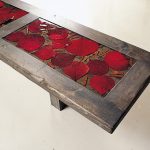
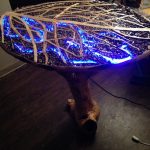
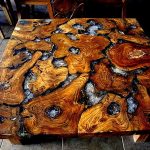
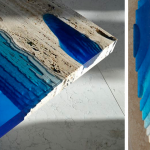
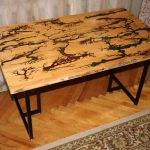
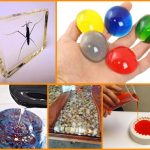
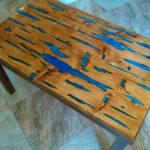
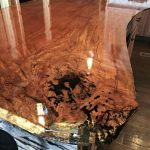
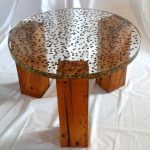
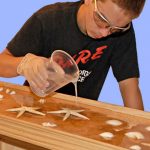
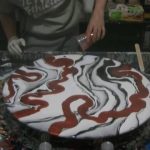
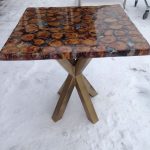
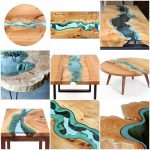
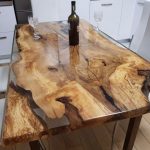
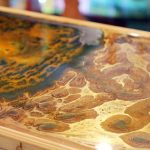
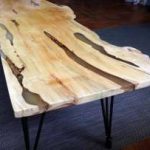
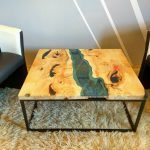
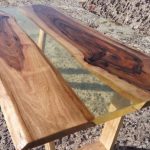
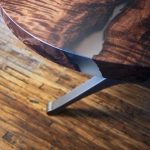
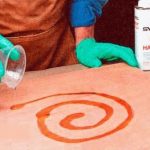
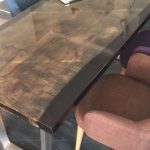
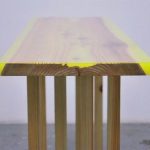
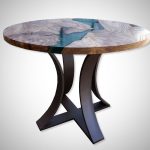
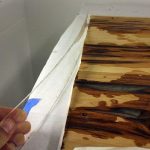
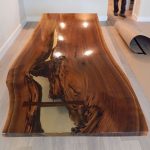
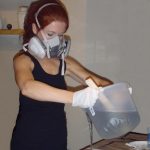
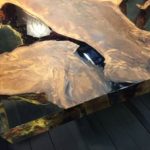
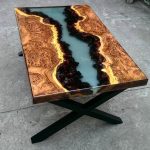
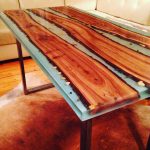
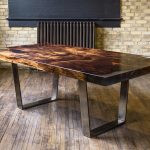
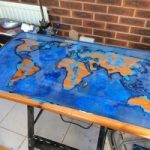
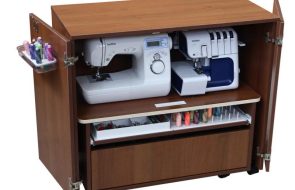
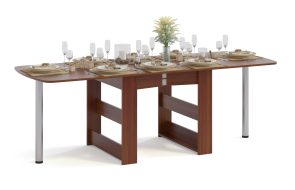
The article needs to be corrected. The message seems clear, but the understanding of the essence of the resin, the advantages, for example, universal properties - is completely absent. What about chemistry, the wording is incorrect: From which end did polyester alcohols appear? Hardening occurs, mainly according to the Amine type, They use in such a curing process occurs in T at 10-35C. This process of (cold) hardening is often practiced in small-scale production in terms of souvenirs, gift products, advertising business, interior decoration, production of large plastic parts for the design of passenger transport. Such a 'friendly' polymer, which would be so different, durable, light and non-toxic to humans.
And what about the downsides - like instability to UV radiation? That is - do not take it outside, do not use UV lamps to disinfect rooms.. Or am I wrong?
what kind of wood can be used
How does the tree stay exactly in the middle of the resin?
Just fantastic! Can a kitchen countertop be made of resin?
What resin is used for such products? Can you recommend?
I wanted to start making such tables, tabletops, etc. What would you advise, which resins are better, which companies are more profitable. Thanks in advance for your answer
Please tell us all the details of this production:
Cost price
Technology
Necessary equipment
Thank you!
Tell me, what about mechanical damage? Our table smells like some kind of oil, maybe drying oil. And is it possible to put a silicone tablecloth (like soft glass) on top? Won't the wood suffocate?
Please tell us all the details of this production:
Cost price
Technology
Which epoxy resin company is better?
What to pay attention to when making
Thanks in advance!
Please advise
Which resin company is better?
Technology
What is the best way to make a table form?